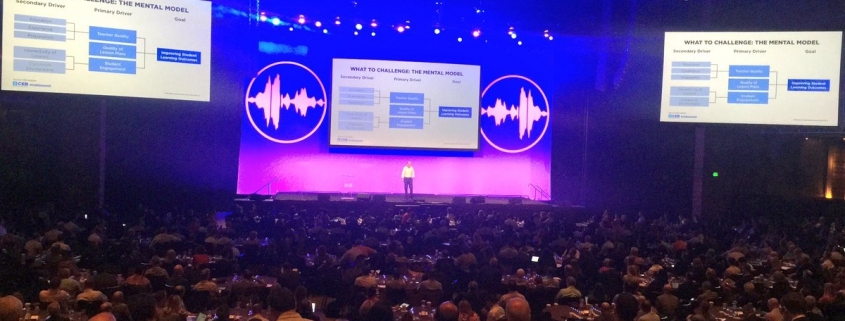3 Sales Strategy Secrets Revealed at #CEBSummit
Our team just got back from a long, informative week at last week’s CEB Sales and Marketing Summit in Las Vegas. Each year we leave with hugely valuable insights on how the customer is changing and what organizations need to do about it. However, the best part about CEB is that they don’t stop at insight; they provide valuable tactics on what to do about their findings. And by the way, we highly recommend attending the conference next year if you didn’t attend this year!
Here are 3 solid insights that were eye opening and yielded the greatest amount of conversation at the conference this year.
-
When the world of sales gets more complex, we need to think SIMPLE
Lot’s of discussion at the conference on how sellers and marketers address the fact that customers have more information than ever, yet find it harder and harder to make decisions & change. This is not a new trend, but CEB teased out a new implication of this trend – How is this new reality impacting the complexity your SALES TEAM needs to address just to engage with customers?
From customer complexity, product complexity that expands with new offerings, and internal complexity, the job of the seller is getting harder and harder. Simplification for the seller is key in order to efficiently and effectively go-to-market. Many times while sales leaders say they are enabling their team with tools, technology and support they are in turn just handing over more tools and complexities for the seller to manage. From a technology standpoint, there are too many systems and infrastructures for reps to learn and use and most of the time these don’t lead to increased productivity and efficiency. In fact, sales reps believe internal complexity is their biggest barrier to sell, more than product and customer complexities. This includes the support, technology and internal stakeholders needed to easily complete a sale.
Consider this: How can we reduce internal complexity and operations to better sell?
At MarketBridge we believe that this starts with a connected solution (integrating your existing systems) for your whole team to easily manage and align on each sales play. It also requires relentless focus on simplifying the process and workflow for the seller, making data, analytics, and technologies more integrated and easier to use. -
Take the YOU out of your pitch, and get back to what the CUSTOMER needs
CEB’s research suggests that there has been an increase in stakeholders involved in the buying process, even since just last year. Their statistics show an increase from 5.4 customer stakeholders involved in a buying decision to 6.8 today. This increase has led to longer cycle time, lower conversion rates, and higher likelihood of decisions tending towards status quo as opposed to change. So how do we fix this? Customer focus. Constantly, businesses are asking themselves questions such as “Why would they work with us? What will they buy from us? What drives loyalty with us?” All in thinking that answering these questions will lead to more closed deals. But the big problem here is the word “US.” We need to better teach customers about their own business processes, align all stakeholders, and help give a solution to their difficulties. A real focus is now more than ever on moving to a customer centric and vendor agnostic approach.
Consider this: What does your customer need and why? What keeps them up at night? Take what YOU do out of it.
At MarketBridge, we believe a lot of the answers to these questions are often hidden in plain sight – somewhere in the data that exists within your systems. And when marrying your customer knowledge with additional customer conversations, it’s a win-win – your customer gets more insight and value, and you can close deals more quickly. -
Customer lifetime value can be a magic number
We heard an interesting POV from Tim Clarke, Director of Product Marketing from Salesforce, on how sales needs to be more involved beyond acquisition and in fact, own customer lifetime value. Traditional sales reps focus on acquiring new customers but what about cross-sell/upsell, retention and loyalty? We firmly believe that 80% of a company’s revenue will come from existing customers. Combining this idea with the need to be more customer centric can lead to a more trusting relationship with sales reps. It’s not just a single deal, you present yourself as a long term trusted advisor that knows their business and can approach customers with new ideas, expanded/additional solutions to help them meet their goals.
Consider this: What if your sales reps invested more time in cross-sell and upsell to existing accounts that they’ve developed relationships with? What do you think would be the result?
Read more about our perspective on the value of cross-sell in this blog.
Overall, the conference was very valuable in order for us to better understand our own business and our customers. We would love to chat about the conference and your thoughts on above. Post your comments below!





